Update, 2025: This post is over 13 (!) years old as I’m typing this. While we all know nothing happened in world history between 2012 and 2025, my opinions on what were and are essential pre-Codes has evolved as this site has racked up to almost 1,000 reviews in total.
So while you may use the list below as a general idea, I would also recommend you pick up my new book from TCM and Running Press, Pre-Code Essentials, which covers 50 of the most notable movies of the time. Most below are in the book, along with trivia, pictures, censorship notes and more. You can order it now at Amazon, Barnes & Noble, Bookshop.org, and Larry Edmunds.
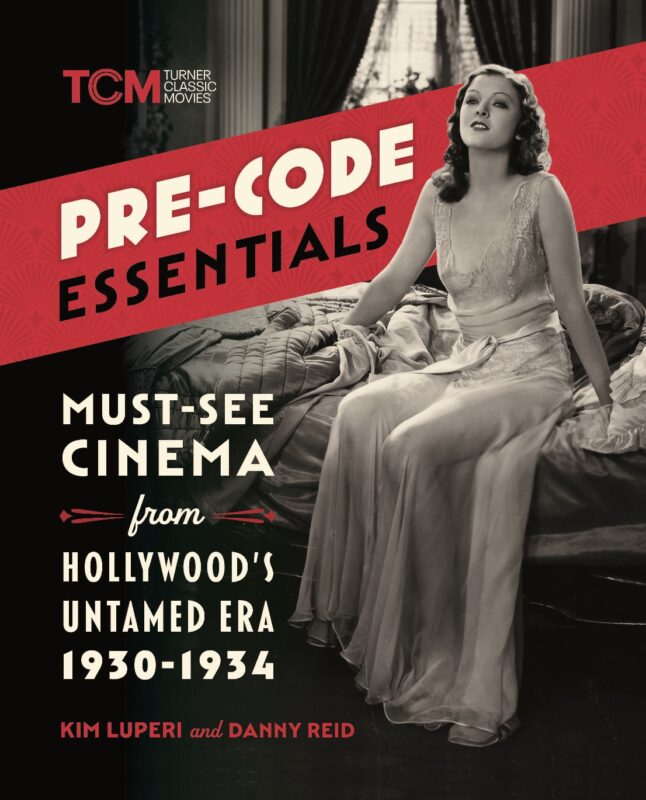
Thank you!
Original 2013 post: I am not a list person. This is one of the reasons that you don’t see a whole lot on this site. But I also understand that it’s nice to get a list of movies to serve as a good jumping off point for people who have just discovered pre-Code cinema or for people who love films of the early 30s to compare and contrast my selections with their own. That, and not many people have the time and energy to watch all of the movies made during the pre-Code period.
Please note that this list skips a few movies that have long been categorized as ‘great films’ regardless of the period– All Quiet on the Western Front, Dracula, Duck Soup, Frankenstein, Grand Hotel, It Happened One Night, King Kong, and The Thin Man are all rightful classics that you should seek out if, for some unfathomable reason, you haven’t seen them before. I cover these on the site, of course, but I wanted to save this list for the more discerning connoisseur whose goal is to dig a bit deeper into pre-Code Hollywood.
These are my opinions, of course, and this list constantly changes on both paper and in my head. If you disagree with any of these or have some suggestions of your own, feel free to point it out in the comments at the bottom!
Essential Pre-Code Hollywood Films
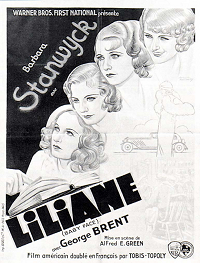 |
Baby Face (1933)Barbara Stanwyck stars as a woman who has spent her entire life being sexually exploited by her father as a means to further his own end. After he dies in a fire (which her character, Lily, watches with a barely-contained smirk), she decides it’s time to exploit her sex for her own monetary gain. She works her way up the corporate ladder, one bathroom rendezvous at a time. Frank in its sexual politics and utterly malicious in its view of men, Baby Face drew a lot of ire from the Hays Office and was edited before release (including the addition of a blatantly false ending) in hopes of minimizing the potency of its message. Nothing doing. |
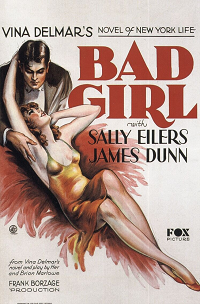 |
Bad Girl (1931)Frank Borzage cut a wide swath over cinema history and many of his entries in the early 1930s, like Man’s Castle and A Farewell to Arms, are among his greatest. Bad Girl is a wonderfully rich drama that closely examines how a quick courtship can go awry. Beautiful and smart and wonderfully mature, it’s a great example of a movie with shades of grey that the Production Code would soon set its sights on. |
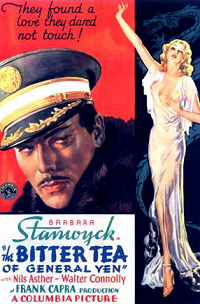 |
The Bitter Tea of General Yen (1932)Of Frank Capra’s many great melodramas of the early 1930s (including the brazen religious satire The Miracle Woman), The Bitter Tea of General Yen stands head and tails above the rest. A pointed look at American arrogance contrasted against a Chinese civil war. This movies politics and portrayal of a love affair between a Chinese man and an American woman make it truly noteworthy. |
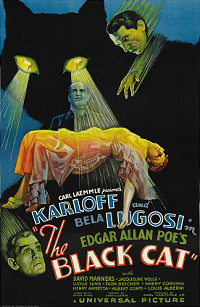 |
The Black Cat (1934)The first teaming of horror icons Boris Karloff and Bela Lugosi sets the stage for one of the most wicked horror movies put to film. Heavy editing by Universal after it was finished give the movie a dreamlike quality, only emphasizing the movie’s dark themes, among them including incest, necrophilia, and satanism. Something you really have to see to believe. |
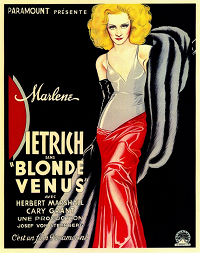 |
Blonde Venus (1932)No one captured the artistic zeitgeist of the continental European flair as much as German director Josef Von Sternberg. His collaborations with Marlene Dietrich are legendary, and Blonde Venus may be one of their best. |
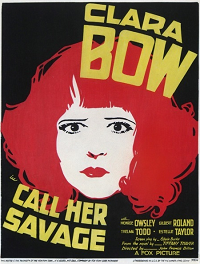 |
Call Her Savage (1932)Star Clara Bow’s last ditch effort at talkie stardom is the completely nuts Call Her Savage which works as a good, inelegant companion film to the above Blonde Venus. This shit is nuts. |
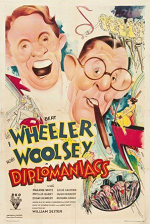 |
Diplomaniacs (1933)It was a brief mental debate whether to pick perennial World War satire Duck Soup for the list, but, honestly, as funny as it is, it’s been relatively neutered by censorship boards over the decades that eliminated most of its risque footage and jokes. Diplomaniacs, however, suffers no such subtraction, and while both are funny, Diplomaniacs still feels startlingly relevant. |
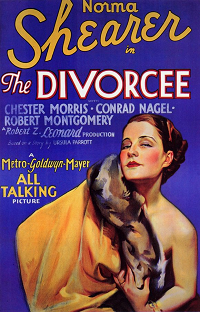 |
The Divorcee (1930)One of the most thoughtful and passionate looks at marriage and infidelity in any era, The Divorcee is Norma Shearer’s time to shine. She plays Jerry, an idealistic young woman who marries her lover, Ted. A few years later, Ted grows bored and cheats on her: in retaliation, she sleeps with another man to ‘balance the books’. He’s outraged, and the movie takes aim of the view that women must be more chaste than men, with Shearer living it up and exploring her new found freedom. Brilliantly directed by Robert Z. Leonard, it’s touching and fascinating. |
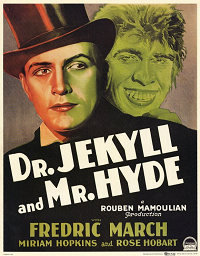 |
Dr. Jekyll and Mr. Hyde (1931)One of my favorite movies, Rouben Mamoullian’s unbelievably stylish Dr. Jekyll and Mr. Hyde has it all: great acting, special effects that still stun, Freudian undertones out the ying yang, and a narrative that points its finger at the audience. It’s exciting and a visual feast, and mainlines the vitality of the era in one amazing package. |
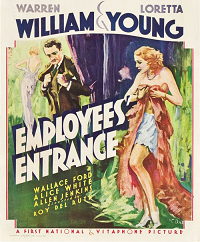 |
Employee’s Entrance (1933)Few movies are more darkly funny and daring (all while wearing the pretense of normality) than Employee’s Entrance. Set in the world of department stores, we watch as good, hardworking men chafe under incompetent management. Warren William is a nasty, effective middle manager who manipulates his employees (and does far worse than that) to bring his business back on top. |
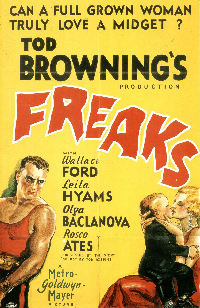 |
Freaks (1932)One of the most controversial and weird movies ever made is about a troupe of circus freaks and how they react when one of their own is humiliated by a beautiful acrobat. Freaky, fascinating stuff. |
 |
Gabriel Over the White House (1933)The suddenness of the Great Depression did not just shake the economic fortunes of the country, but its political roots as well. While countries like Italy and Germany turned to fascism, the United States stayed a democracy… though not everyone thought that was the best idea. A wild fantasy, Gabriel Over the White House |
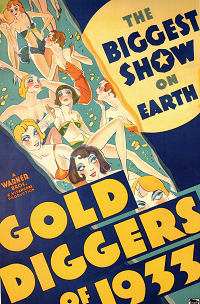 |
Gold Diggers of 1933 (1933)One of my favorite movies, no film embodies the pre-Code era more than this one. |
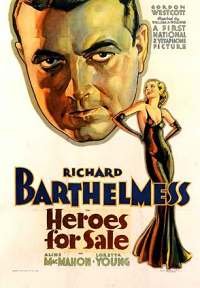 |
Heroes for Sale (1933)The ups and downs of post-World War I America as well as the despondency of the Great Depression are captured in this tight Warner Brothers thriller which takes Richard Barthelmess from the trenches to the gutter, through drug addiction and true love. It’s spry, heartfelt, and a gut punch, all at once. |
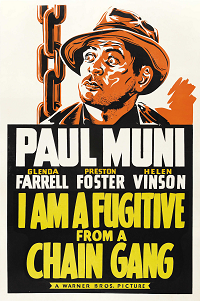 |
I Am A Fugitive From a Chain Gang (1932)A daring expose on the conditions in Southern prisons, I Am a Fugitive ignited a national debate on prisons and prisoner treatment. Definitely one of the best of the Warner Brother’s socially conscious pictures of the early 30s. |
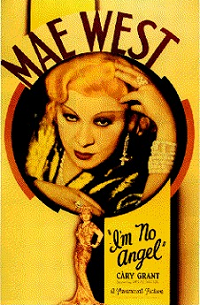 |
I’m No Angel (1933)Mae West was one of the most controversial figures of the early part of the 20th century, a bold, vivacious, and undeniable sexual force of reckoning. Her contract at Paramount sent censors in a tizzy, and I’m No Angel remains her best film, a bold thesis statement beautifully expounded upon. |
 |
The Lost Patrol (1934)One of John Ford’s earliest ‘great’ films, The Lost Patrol is another example of an isolationist, anti-war parable that’s filled with effective performances and a brutal, nihilistic ending. |
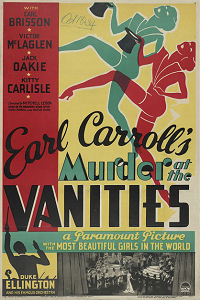 |
Murder at the Vanities (1934)As one of the final exclamation points in the pre-Code era, Murder at the Vanities is an unhinged musical that plays on everything that’s come before it and pushes the dial up to 11. Besides portraying interracial dancing and callous murder, there is a ton of flesh on display, as well as an entire song extolling the virtues of “Sweet Marihuana.” |
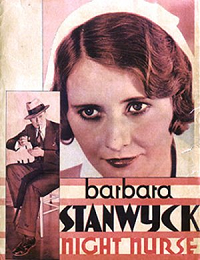 |
Night Nurse (1931)While there are a lot of great dramas on this list, Night Nurse is one of the most wildly silly movies of the early 30s, representing a moral looseness that’s just as fun as the brazen ways the filmmakers invent to get stars Joan Blondell and Barbara Stanwyck to constantly undress. |
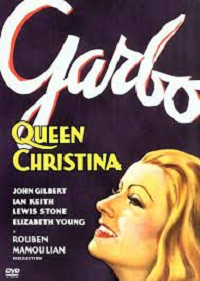 |
Queen Christina (1933)Screen queen Greta Garbo had her best years in the early 30s, and her portrayal of the matriarch Queen Christina may be her best chance to show off her range and exotic allure of them all. |
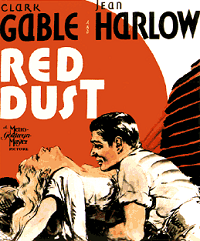 |
Red Dust (1932)A grand melodrama that puts two of the hottest stars of the era in one of the steamiest places on earth. Jean Harlow is a lady of ill repute who ends up at Clark Gable’s rubber plantation. She falls for him, but he has his eyes on a pretty city girl whose husband works for Gable. It’s sordid and nasty (with a heaping spoonful of racism for kicks) and very Pre-Code. |
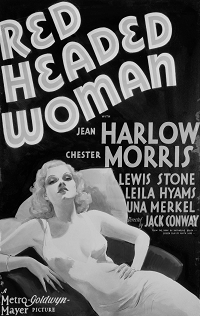 |
Red Headed Woman (1933)Taking on sexpot Jean Harlow was one of MGM’s most daring decisions, and creating a movie that showcased her considerable charm and talent may just have well been suicide. Red Headed Woman is the story of a gold digger who works her way up a series of weak men using her wits and legs to great effect. It’s bawdy and brilliant. |
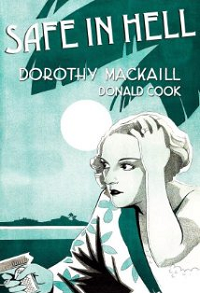 |
Safe in Hell (1931)I wrote the longest review I’ve ever written for Safe in Hell, which definitely deserves it. William Wellman cloaks the nasty tale of a murderess hidden away in a Caribbean hellhole in a visual feast full of symbols and shadows. Feminist and bold, Dorothy MacKaill knocks it out of the park as she attempts to survive the sweltering heat with her virtue intact. |
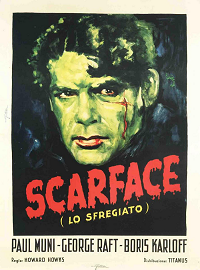 |
Scarface (1932)While the likes of Al Capone, John Dillinger, and Babyface Nelson have become modern myths of American enterprise and ingenuity, it’s easy to forget that the movies were around back then, too, and not everyone was keen on the gang wars that turned cities into bloodbaths. Howard Hawks’ Scarface is both a repudiation and glorification of the gangster, creating a man (played sublimely by Paul Muni) who comes across little better as a violent force of juvenile aggression. And his relationship with his sister is mighty interesting, too. |
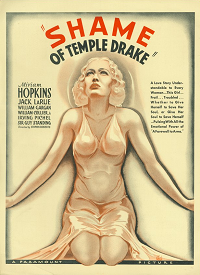 |
Story of Temple Drake (1933)Miriam Hopkins stars in this adaptation of William Faulkner’s infamous Sanctuary, the story of a girl who says ‘yes’ an awful lot until a brutal rape and a cast of despicable characters change her life. Haunting and dreamlike, Story is a movie that had to be mostly told in implication, but it remains a fascinating attempt of taking truly sordid material and reworking it for the screen. |
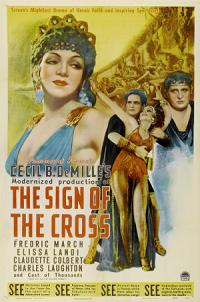 |
The Sign of the Cross (1933)Cecil B. DeMille’s films were often filled with sin and sex, fitting comfortably under the aegis of censorship due to their ‘historical’ or ‘religious’ natures. This film, an expose of the early Roman Empire and the depravity of the Emperor Nero, contains a lot of lavish moments, including a nearly-nude Claudette Colbert and sexual perversion galore. |
 |
Smarty (1934)One of the true great oddities of the early 1930s, this ribald sex comedy is about impotency and rough sex– without ever being able to address either of those issues by name. With a cast of Warner Brother’s best comedians, it’s an intensely divisive film, and, more often than not, completely reviled because of its seeming endorsement of spousal abuse. Whatever you think of it, there’s no doubt that a movie like it couldn’t have been made after 1934, and, honestly, it’s amazing it got made then, too! |
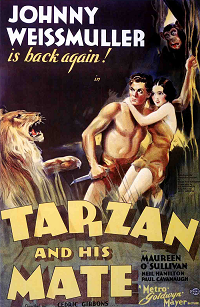 |
Tarzan and His Mate (1934)The Tarzan films, which would soon become the province of young children as the 30s evolved, began as sexy, fun adventure movies. Tarzan and His Mate is infamous for its nude swimming scene between Tarzan and his ‘mate’, a moment of serene beauty that was pointed at for future censorship. |
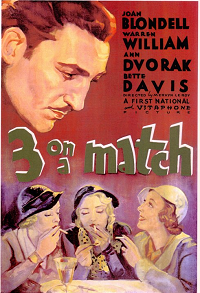 |
Three on a Match (1932)Another fun Warner Brothers flick that shows how three women overcome their class differences and either make it big by marrying up or fall down into a spiral of drug addiction. But, no, really, it’s fun. |
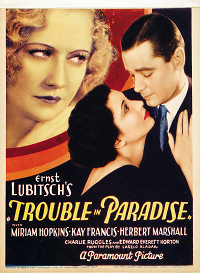 |
Trouble in Paradise (1932)Ernst Lubitsch’s charming comedy masterpiece is all of the sophistication and wit you could ask for in a film from any time period. Starring two of the era’s best (and most unjustly forgotten) female actors with Kay Francis and Miriam Hopkins, it’s a cocktail of charm and fun, all the while flouting the Production Code with a wry grin. |
Title ()Description Click here to read my full review. |
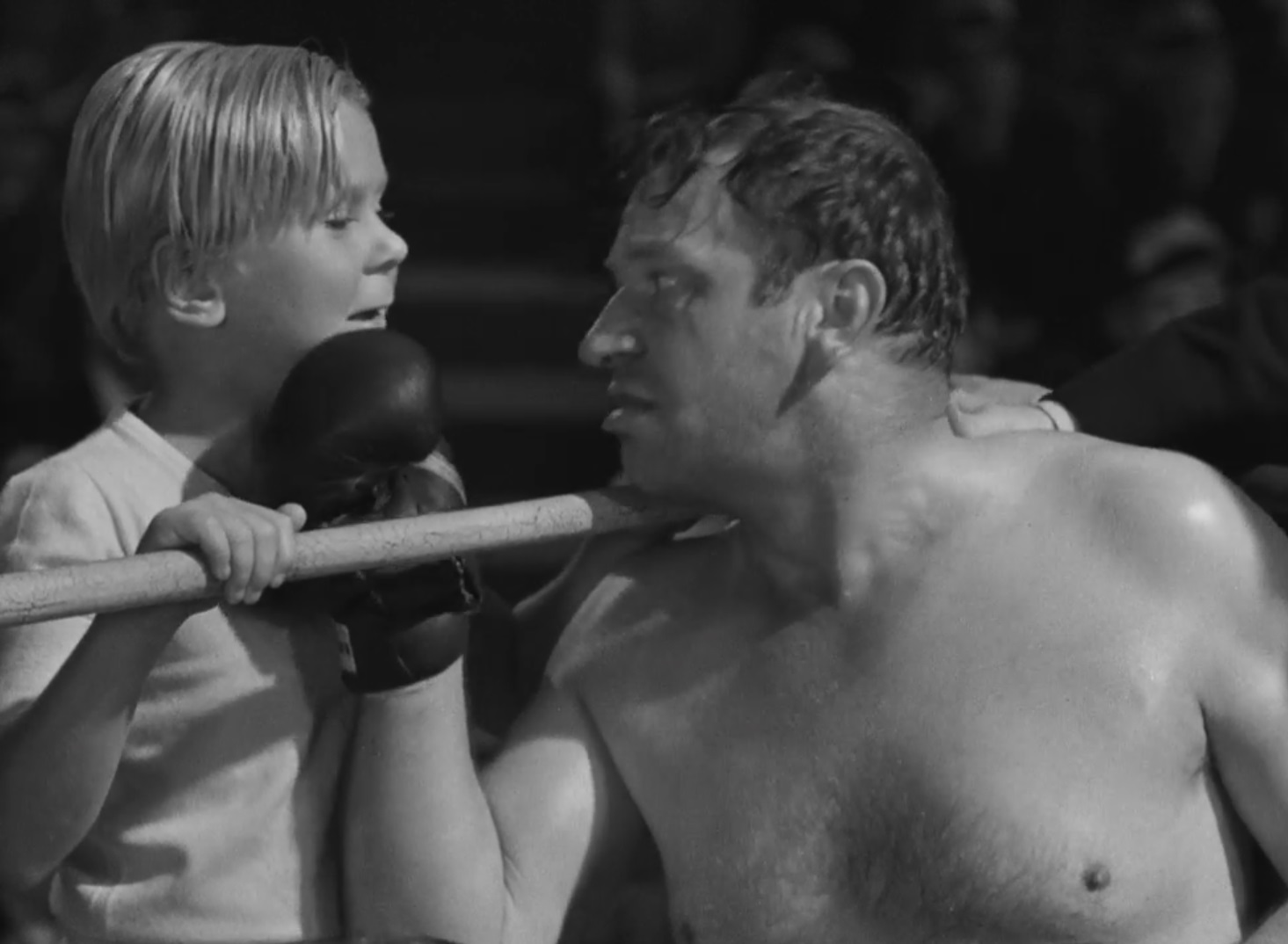
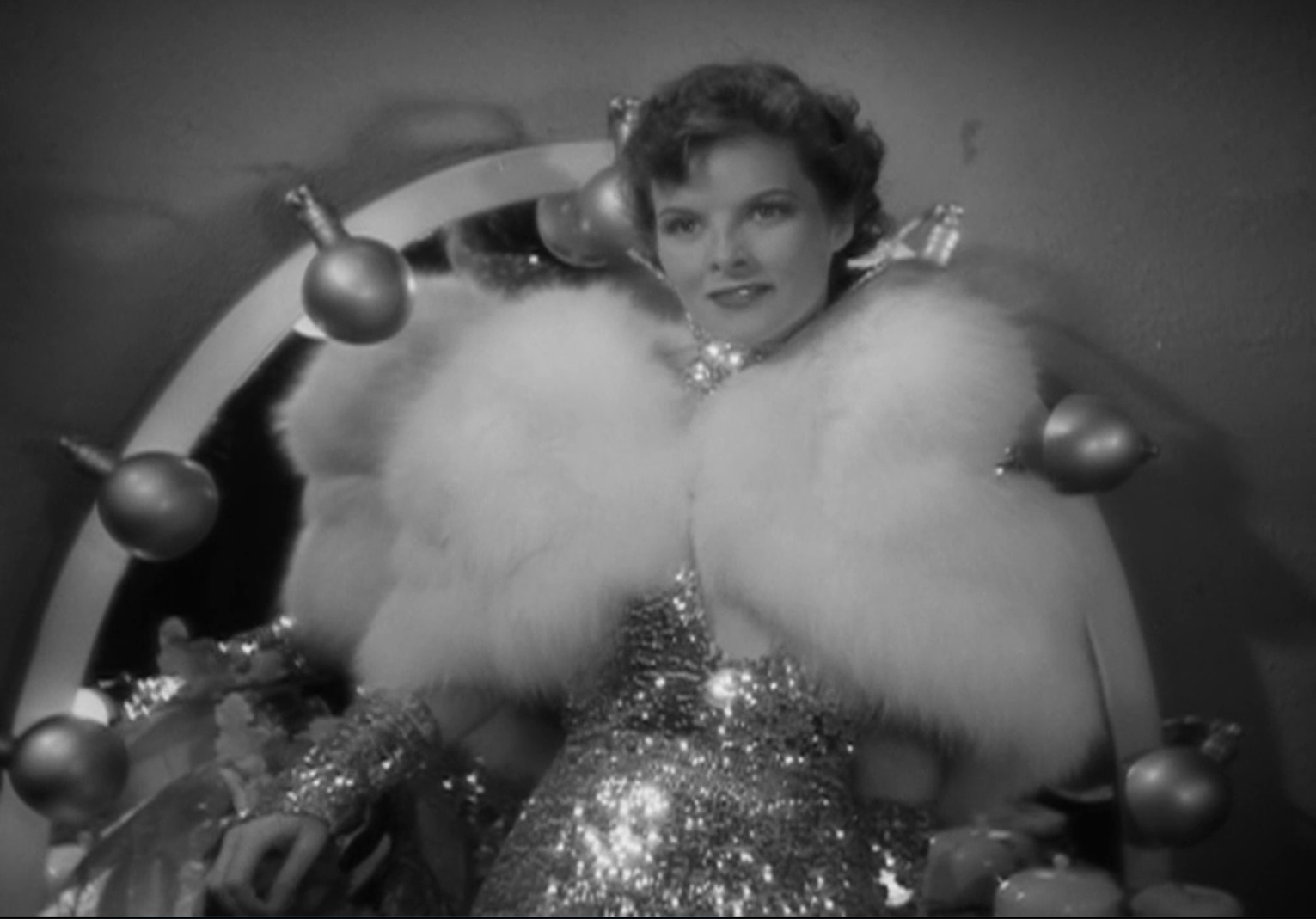
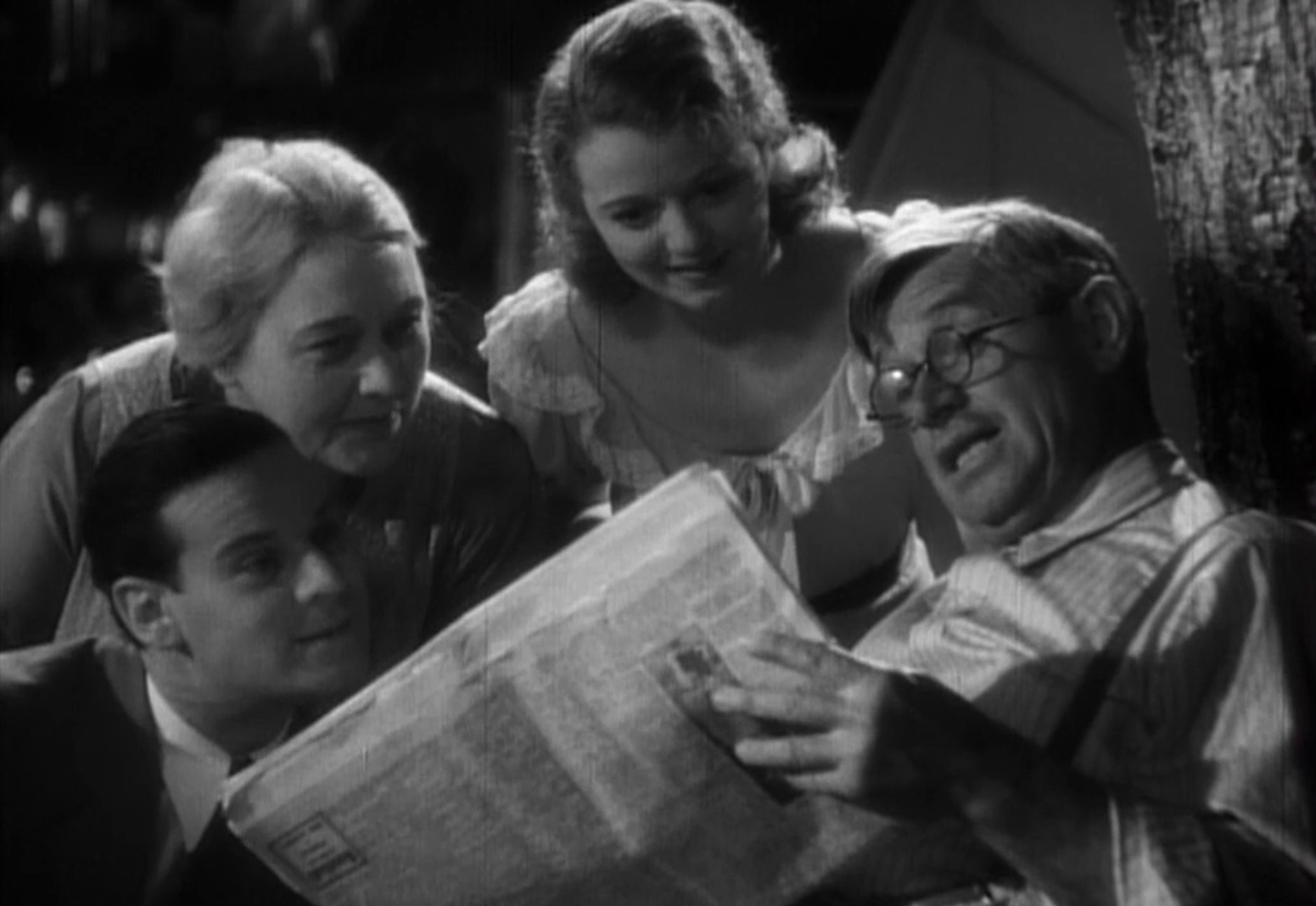
43 Comments
shadowsandsatin · January 18, 2013 at 8:40 pm
I’m having such fun finding stuff on your site, Danny! I’m definitely on board with some of these — especially The Divorcee, which is one of my all-time faves, Safe in Hell, and Red Dust. I’d also include Baby Face and Red-Headed Woman, Mandalay, and Private Lives, I think . . .
Danny · January 19, 2013 at 6:08 pm
Those are also all great picks! I think rewatching Baby Face definitely made me want to add it to the list, and those others you mentioned are fantastic. I might revise this list every couple of years, and I’ll keep those in mind!
Jeff Molnar · December 10, 2019 at 5:26 pm
What about Forgotten Women with Evelyn Brent..all girl cast loved it 😉
Emily · November 2, 2013 at 4:52 pm
Great list, though I will admit the ending of The Divorcee irked me a bit. I would also recommend The Most Dangerous Game (1932) for its shocking violence and sexual subtext as well as Duck Soup (1933) for its insane innuendos.
Danny · November 4, 2013 at 6:00 pm
I don’t mind the ending to The Divorcee, but those other too are also top tier stuff– I only skipped Duck Soup since I figured everyone should watch it, pre-Code or not. I have to revisit this article at some point, and those are great suggestions!
Brendan G Carroll · February 2, 2014 at 4:29 am
What a great blog!!! I think I would have to include Baby Face in any top ten. I am also wondering why you don’t include Love Me Tonight and The Merry Widow (1934 version). But thanks for putting all this together. I have been fascinated by this area of film study ever since I read “Sin in Soft Focus” by Mark Verira. Cheers!
Danny · February 2, 2014 at 12:45 pm
Thanks for the nice words! For those movies you mention, Baby Face didn’t get a nod since it had been a while since I’d seen it– and it’s definitely something I’ve regretted since revisiting it. For the other two, I haven’t seen them yet! That’s why I rarely make lists for the site, since there’s still so much to go. I’ll probably revise this later in the year, and I’ll definitely hit The Merry Widow by then. Thanks again for reading, and if you haven’t, check out Complicated Women by Mick LaSalle and Dame in the Kimono by Leonard Leff and Jerold Simmons– they’re also great takes on the era and how censorship affected American films.
Brendan G Carroll · February 2, 2014 at 3:49 pm
Thanks for the tip about those books – will check ’em out! Regarding films for the list that should be checked out, I must mention one title that nobody seems to have seen and which has never been on TV as far as I know. That is “The Story of Temple Drake”, the 1933 adaptation of William Faulkner’s novel ‘Sanctuary’, starring Miriam Hopkins and Jack La Rue (in his most norious role) and which graphically depicts a particularly nasty rape. It was never re-released after the Code became enforced as the entire film contravened the rules so much. I keep hoping it will be released on dvd but in spite of one demand DVD-R bringing dozens of obscure titles out of the vaults, this one stays hidden. Was it really so bad? Also, do try and see Mae West’s “I’m No Angel” if you haven’t – it’s the raciest and funniest of all her films and some sources claim was the film that provoked Will Hays and the Catholic church to join forces and insist the Code be enforced. I should also mention De Mille’s “Sign of the Cross” with perhaps the screen’s first lesbian dance and truly shocking scenes in the arena. The uncut version was found in De Mille’s private library and is still strong stuff after 82 years.
Danny · February 3, 2014 at 10:53 pm
Thanks for all the great info. I’ve heard of Temple Drake for sure, I just haven’t found a good copy of it to watch yet– it’s certainly infamous enough. I haven’t seen I’m No Angel in a while and want to revisit it soon; ditto for Sign. So many movies to see, so little time!
claudia · July 30, 2014 at 4:19 am
Well.I mostly agree on this list,but poor barbara stanwyck should have been here somewhere…and not even a warren william flick?
Danny · July 30, 2014 at 8:57 am
I’ll be the first to admit that this page is out of date. Hopefully by the end of the year it’ll be updated and expanded– and definitely with some William and Stanwyck. Cheers!
Joe · August 29, 2014 at 3:08 pm
“The Story of Temple Drake” can be found here: https://www.youtube.com/watch?v=OQo-i_e86KY
brianpaige · November 9, 2014 at 12:46 am
Surprised that Peach-O-Reno wasn’t on here since it is probably W & W’s most overtly pre-code outing, other than the hacked to bits So This is Africa. Hips, Hips, Hooray has a lot of scantily clad chorus girls and what not, but as a film overall it’s not THAT pre-code in terms of plot.
Danny · November 13, 2014 at 8:22 am
The thought had definitely crossed my mind, but I was doing my best to keep the list short. Love Peach-O-Reno though.
Havard · February 3, 2015 at 3:51 am
Morocco with Dietrich and Cooper could find a place on your list….
Danny · February 8, 2015 at 1:43 pm
It definitely deserves a rewatch from me. I’ll get on it, thanks!
Tabetha · March 18, 2015 at 3:13 pm
Danny,
I love this site and I love your list. We are forgetting a James Cagney Pre-Code staple “Taxi”. I adore this picture as it gives insight on an authentic old school, blue collar, toughguy “New Yorker” type personality portrayed by Cagney. It also features a famous misquoted line in his career “You dirty rat”. My favorite Cagney movie above Angels with Dirty Faces.
“Three Wise Girls” with Jean Harlow and Mae Clark is a good one as well. This film touches on themes relating to virtue and infidelity. A film where Jean actually plays the virgin and she is as convincing as the dignified, pure Cassie in three wise girls as she is aggressive ambitious and vulgar in Red headed woman. She was a versatile actress whose skill improved with experience and age, she did not get the proper recognition for her ability to play diverse roles.
I love the precodes and I am so happy to have stumbled upon your site.
Tabetha
Danny · March 19, 2015 at 1:47 am
Thanks Tabetha. I’ve reviewed both of those films, and enjoy them both deeply. The problem in trying to trim down to essentials that a lot of very worthy candidates get overlooked, and those are both very worthy. Thanks for stopping by!
Peter Hyatt · June 4, 2015 at 11:43 pm
Danny, what do you make of the Bugs Bunnyesque, “The Naughty Flirt” with Alice White? It is one of my favorites, as ridiculous as it is.
Danny · June 11, 2015 at 1:32 pm
Still got to see it, I’m afraid. :/
Richard Chatten · August 28, 2016 at 11:10 am
Anything featuring Myrna Loy gets my vote!!
Fiona MacDonald · June 6, 2015 at 9:03 pm
I just want to say that I think your site is wonderful!! What a treat for us classic fans, interesting and addictive it’s now given me a list of even more films I want to see that I have totally missed!! thank you for doing this site!!
Danny · June 11, 2015 at 1:55 pm
Sure! And thanks for your kind words!
Elizabeth Penrose · July 8, 2015 at 10:27 pm
Crowd-source listing! Why not have us make lists of what we think are the best pre-code films in various categories (for instance, horror, feminist, racial minorities in film, social history of the early ’30s) and post the most-mentioned ones in the category?
If I haven’t mentioned this before, I love the site.
Danny · July 16, 2015 at 10:50 am
Thank you! That’s a good idea, but time consuming… I’ll have to give it some more thought after the next big thing I’m working on gets wrapped up.
tony rotella · May 28, 2016 at 2:40 pm
i would include “Female” with Ruth Chatterton. She is really something!
Dave · June 16, 2016 at 8:28 pm
Hey Danny, I would definitely go for The Island of Lost Souls (1932) with the great Charles Laughton. An atmosphere and ending that are really unsettling and several great, emotionally-charged performances. A real gem and one of the finest turns from Laughton.
Richard Chatten · August 28, 2016 at 11:56 am
It’s a good list!
But two other pre-Code movies I always bang the drum for are ‘Five-Star Final’ (1931) and ‘Little Man, What Now?’ (1934).
Victoria · October 3, 2016 at 7:35 am
Have you ever seen “Gentlemen’s Agreement”? It’s a must see for pre-code movies!
Michael Cormany · October 25, 2016 at 10:36 am
Great site and great list. Love reading about 3 or 4 movies I haven’t seen yet (Call Her Savage, Temple Drake and Gabriel Over the White House)– and I’d never even heard of Smarty! Gonna look for it. My two additions would be One Way Passage and Jewel Robbery. I agree with the Myrna Loy fan above. Never can have enough Myrna and I also love Kay Francis. She’s great in everything she did in the 30s and really sparkled in her pre-code films. Thanks for all the info and flicks to find!
Michael Cormany · October 25, 2016 at 10:42 am
And of course, how did I mention Myrna Loy and Kay Francis and forget to add William Powell? Superb in everything, and especially fine when paired with Myrna and Kay.
Margie Campanella · February 7, 2017 at 4:46 pm
Great list, I’d add International House, a truly weird pre-code from Paramount with W C Fields and Burns and Allen. It’s plot, if you can call it that, is about companies sending out their representatives to a Chinese Hotel to bid on a primitive television receiver that shows radio stars such as Rudy Vallee and other acts that even the most knowledgeable vaudeville fan never heard of. Of course it has a musical number in the middle with Sterling Holloway dancing. You should check it out
Nick T · May 13, 2017 at 3:26 pm
I appreciate this list very much, and your recommendations. I must admit I was disappointed by the spare (and slightly inaccurate) treatment given to Freaks, though. I’m thrilled that it’s here, but I don’t think the description really does it justice or would be particularly enticing to someone who had never seen it, particularly next to the thoughtful analyses given the other films in the list. Passion compels me to try and make up some of that difference, and I hope you will be kind enough to indulge me.
First, it may seem a small point to say that the issue the freaks have with the beautiful acrobat, Cleopatra, is not that she humiliates Hans but that she schemes, with cold-blooded pre-meditation, to do something much more sinister and final. But actually I think it’s pretty central to one of the main themes of the film, which is that the “hideous” freaks are incredibly human with their tender dreams and their inclusive sense of love and loyalty toward one another, while the physically perfect people, in their depraved greed and narcissism, are rather less so.
Freaks might be one of the most socially subversive films ever made in its sympathetic depiction of the poignant and at times noble inner lives of people literally treated as subhumans by society at large, and its pointing the finger at the worship of beauty, brawn and cold, hard cash as the forces that threaten the harmony which can exist among different sorts of people in a mutually supportive environment.
And, fittingly, I don’t think it’s been very well understood since it was made. Although it could be called a thriller, or a melodrama with thriller elements, it’s not really a horror movie. It is dark and eerie, but also full of thought-provoking ambiguities, and it’s a matter of interpretation who does or doesn’t meet the fate they deserve.
Michael Shanahan · July 14, 2017 at 5:46 pm
Another thing about Freaks; in that era eugenics had been a popular idea in the USA, there were people who advocated for the sterilisation or even involuntary euthanasia of the handicapped. “In 1937, a Gallup poll in the USA found that 45 per cent of supported euthanasia for “defective infants”. A year later, in a speech at Harvard, WG Lennox argued that preserving disabled lives placed a strain on society and urged doctors to recognize “the privilege of death for the congenitally mindless and for the incurable sick”. An article published in the journal of the American Psychiatric Association in 1942 called for the killing of all “retarded” children over five years old……Allied authorities were unable to classify the sterilisations of disabled people in Nazi Germany as war crimes because similar laws either did exist or had recently existed in America and other European countries” http://www.newstatesman.com/society/2010/12/disabled-america-immigration
Sorry to take up so much space, but this helps explain why the film was such a flop, but also the greatness of it in portraying the humanity (including everyday sexual desires and relations) of those who seem different.
Sara · June 7, 2017 at 12:10 pm
Some of these I’ve seen and some I absolutely have to check out now. Off the top of my head there’s one definitely missing, though. Blonde Crazy needs to be included in your list! James Cagney and Joan Bondell from 1931. It’s a shame they didn’t do more than a handful of films together- they made such a great film couple. It’s a pretty well rounded list though and very informative reviews without spoiling the movies.
rift · June 19, 2017 at 7:44 am
Agreed on Blonde Crazy, but even more so I think The Public Enemy deserves inclusion.
Maria Siciliano · November 24, 2017 at 6:50 pm
Great site! I recently taught a course at UCLA Extension on pre-code gangster movies. I would add The Public Enemy and The Big House to the list.
Maria Siciliano · November 24, 2017 at 6:59 pm
And two other movies come to mind, ensemble ones: Grand Hotel and Dinner at Eight.
Dani Thompson · March 19, 2018 at 2:41 pm
Thank you, Danny! Your site is so good. I’ve become a pre-code junkie in part because of your reviews and insights. Just became a member and proud of it!
gloria monti · July 27, 2018 at 9:30 am
now i want to teach a course on pre-code hollywood!
Elizabeth · April 10, 2019 at 3:49 pm
I’m the person who asked you about “Zoo In Budapest.” There’s a copy on YouTube! I’m watching it tomorrow!
Titus Weekes · August 30, 2019 at 2:28 am
42nd Street, King Kong, The Mummy, It Happened One Night
Yiprock M · April 21, 2020 at 4:01 pm
I’d nominate “The Greeks Had A Word For Them,” also known as “Three Broadway Girls.” It seems to be a public domain title since there’s a terrible print on YouTube. It’s got snappy patter, three stars who are hunting a husband, and no redeeming social features that I remember–it opens with Joan Blondell in her underwear. It’s been cited as a forerunner of “Sex and The City,” though it isn’t serious in any way. Along with Joan Blondell, it stars Madge Evans and Ina Claire, and was directed by Lowell Sherman. The script by SIdney Howard was based on a play by Zoe Akins. Supporting players included Louise Beavers, Ward Bond, and Betty Grable among many others, and costumes were supplied by Coco Chanel.
Comments are closed.